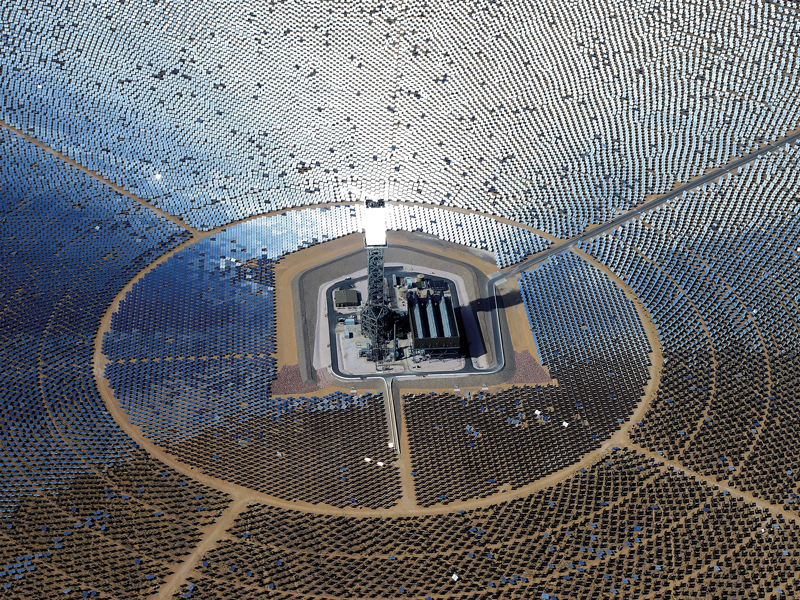The unexpected environmental drawbacks of concentrated solar power plants
The Ivanpah Solar Electric Generating System is a huge facility that produces power for thousands of homes. Unfortunately, there have also been some unintended negative consequences

Concentrated solar power works by using a large number of mirrors to reflect and concentrate sunlight onto a central receiver, which then converts it to heat
Stretching across 3,500 acres of the Mojave Desert, the Ivanpah Solar Electric Generating System is the largest concentrated solar power (CSP) plant in the world. Costing $2.2bn and taking more than three years to build, the facility is the best-known project in the growing CSP market. Having said that, not many are aware that establishments like Ivanpah exist. While solar energy has generally become better established, concentrated solar power remains a little known development.
When most people talk of solar power, they are usually referring to photovoltaic cells that directly convert sunlight into electrical energy. Conversely, CSP works by using a large number of mirrors to reflect and concentrate sunlight onto a central receiver, which then converts it to heat. It comes with benefits and drawbacks when compared with photovoltaic solar, but for some parts of the world, CSP is a perfect fit.
Ivanpah’s current energy output of 392MW – enough to power 140,000 homes – may be impressive, but its real benefit could be as a trailblazer for other CSP plants
The Ivanpah plant, which formally opened in February 2014, has not been without its critics. In February this year, California’s San Bernardino County – home to the Ivanpah facility – passed a bill banning the further construction of large solar projects. Clearly, even green technology is not always welcomed.
A place in the sun
If a bird’s eye view of Ivanpah helps to show its sheer scale, it doesn’t reveal much about how the solar facility actually works. The plant produces energy in a similar way to how most of the world’s electricity is made: using steam-turned turbines. Across three distinct sites, more than 300,000 software-controlled mirrors follow the path of the Sun, reflecting its rays onto the summits of three 459ft-tall towers. At the top of each of these towers is a boiler that is rapidly heated by the concentrated sunlight, producing high-temperature steam that is piped back down to turbines on the ground.
Ivanpah Solar Electric Generating System in numbers
$2.2bn
Cost to build
3+
Years to build
329MW
Energy output
Ivanpah’s current energy output of 392MW – enough to power 140,000 homes – may be impressive, but its real benefit could be as a trailblazer for other CSP plants. One of the major problems facing solar power is how to generate energy when cloud cover (or nightfall) gets in the way. However, CSP plants can be paired with thermal storage – usually in the form of molten salt – to enable energy production to continue even after the Sun has gone down.
Though Ivanpah does not boast thermal storage, one of the facility’s operators, BrightSource Energy, has used information gleaned from the plant’s operations to include thermal energy storage in subsequent facilities, including the Huanghe Qinghai Delingha Solar Thermal Power Project in China.
In the firing line
While environmentalists normally endorse solar power projects, this hasn’t always been the case at Ivanpah. Although the land upon which the facility is built may look fairly desolate, the Mojave Desert boasts a surprisingly rich level of biodiversity. As well as milkweed and queen butterflies, the area around the Ivanpah site is home to a number of desert tortoises. With growing fears that the solar plant could be harming tortoise numbers, operators have spent $55m on mitigating the ecological damage.
Despite these efforts, environmental concerns persist. One particularly grim side effect of the plant’s construction is that birds, attracted to the insects gathering at the top of the towers, are incinerated as they pass through the beams of concentrated sunlight. According to estimates, this results in some 6,000
deaths every year.
Just as the Ivanpah Solar Electric Generating System represents a significant leap forward in the development of solar power, it also serves as an important case study on the unintended consequences that can arise from the deployment of green technology. As more CSP plants are built around the world, operators would do well to consider both the good and bad that they could be doing to the environment.













